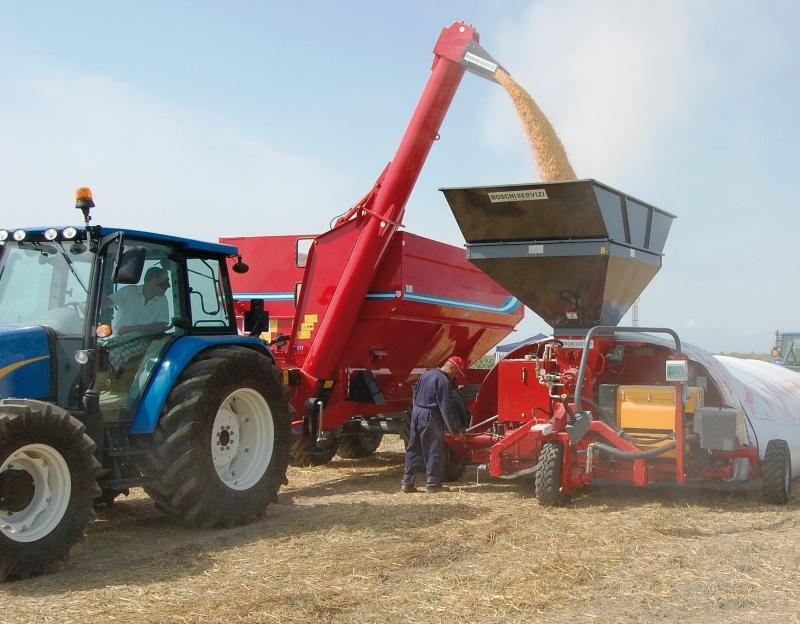Silos Technology
Born in North America at the beginning of the 90’s, this system was developed from a mechanization point of view, and researched for technical and product aspects towards the end of the same decade. This technique immediately arose the curiosity of Argentineans producers and storers, as well as that of those regions where the largest worldwide producers are concentrated (Brazil, The United States, Canada, Australia, etc..). In Europe the different requirements of agricultural companies, which are mainly of medium and small dimensions, favoured the spread of this technology, which, for the moment is still an evolving and dynamic system. These are private companies or cooperatives that produce significant quantities of cereals and companies producing organic cereals (in so much as the system lends itself to storing even small stocks separately) as the plastic material the bag is made of is certified as being anti toxic and ideal for preserving foodstuffs. It is of particular interest, also for traders who want to amplify or create storage centres without relying on further fixed structures (silos or warehouses).
Download our products datasheets
Ideal system
for farms and
storage centers.
It does not
need of
permissions building.
It does not need
of treatments
pesticides.
Very low costs
of maintenance
and cleaning.
Cheap
It is a solution that involves a minimum initial investment.
Flexible
Even for small storages, to differentiate and enhance the products.
Safe
Suitable for storages of organic cereals.
Fast
System with high hourly capacity both on entry and in extraction.
Mechanization
The machines required for this type of storage are mainly three: grain bagger, unloader and self-unloading auger wagon.
The grain bagger is a simple machine powered by the power take off (PTO) shaft an agricultural tractor of average power (at least 55HP) which must be fed by the product to be bagged using an auger wagon. Alternatively the grain bagger can be fed using an auger conveyor driven by a hydraulic circuit. The operative capability of the grain bagger is above 250 tonnes per hour.
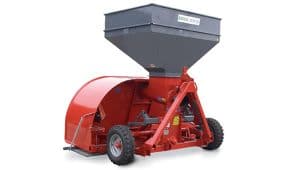
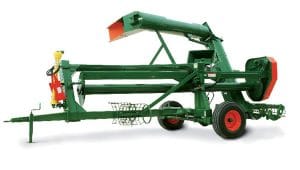
The unloader is also powered by the power take off (PTO) shaft of an agricultural tractor (80/100HP). It is a basic machine and consists of a mobile auger with a central conveyor equipped with a roller able to roll out the plastic bag enabling the entire product to be extracted without waste. In this case the operative capability is around 200 tonnes per hour.
The self-unloading auger wagon is equipped with an high capacity hopper and an unloading auger conveyor which permits a high operative capability, around or above 200 tonnes per hour. Moreover the wagon is equipped with large wheels allowing it to operate on a large variety of soils.
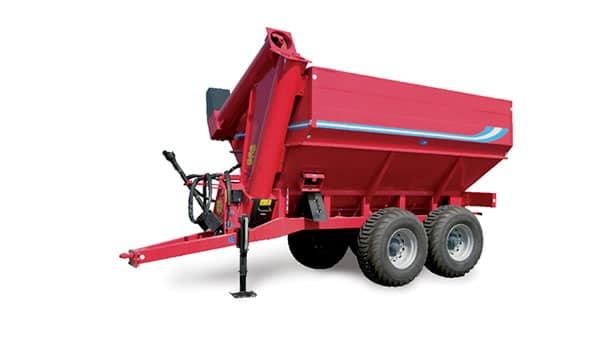
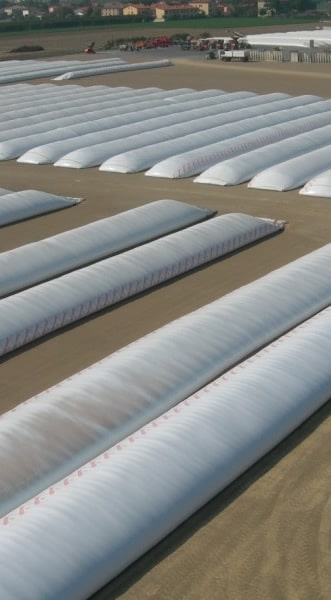
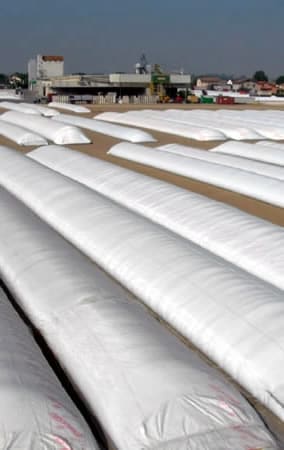
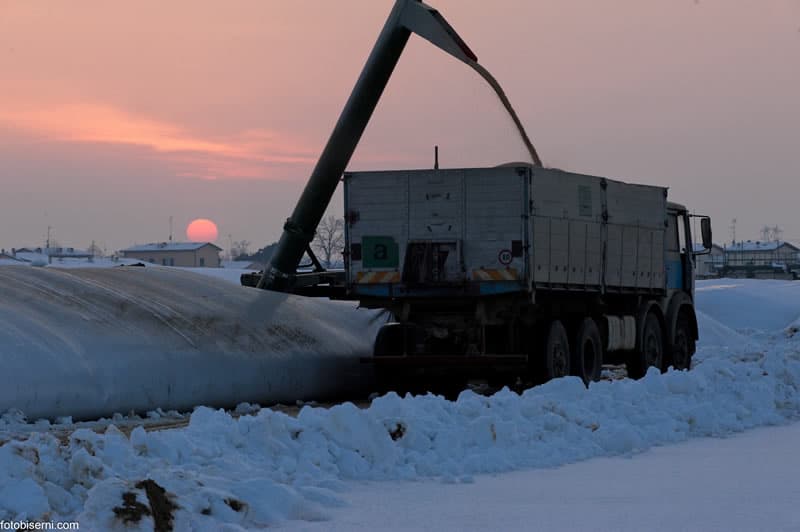
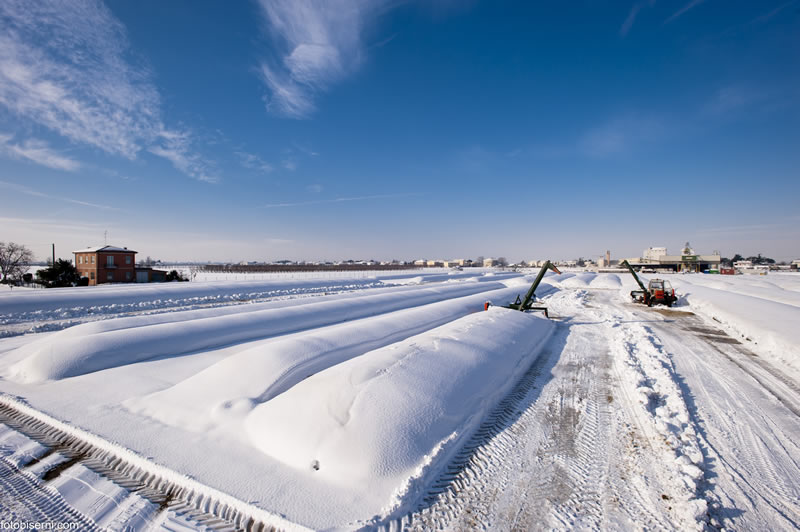
Technical Aspects of the Storage
Research carried out has shown how stored cereals can be conserved for long periods of time without sustaining any product damage on the one condition that they have been bagged at a correct percentage of humidity which is, however, necessary for every other type of storage.
Raised humidity progressively reduces such storage times. The basic conservation principle is that the sacks are hermetically sealed therefore in their normal respiratory activity the seeds consume the oxygen present in the folds/pits and emit carbon dioxide. In other words the cereal is conserved in a controlled atmosphere of self – produced CO2.
This is an environment that inhibits the development of insects and mould. The bag is made of plastic polyethylene material of remarkable thickness, white on the outside to reflect the sun’s rays and black on the inside so as to block light from penetrating.
The diameter of the bags is variable and the most common length is varies from 60 to 75 metres. The bag can be cut and sealed at any point to acquire the length desired.
The temperature of the mass inside the bag follows seasonally the average environmental temperature without any risk for the cereal. It’s moreover possible to make holes to probe the inner temperature and/or take samples of grain. A proper tape is supplied to close inspection holes or to fix accidental tears.
Conclusions
It is the most advanced, easiest and innovative system currently adopted by all big producer countries (Argentina, Brazil, United States, Canada, Australia). It combines ideal preservation, no chemical treatment, low environmental impact and huge energetic save: an ideal circumstance for grain storage.
